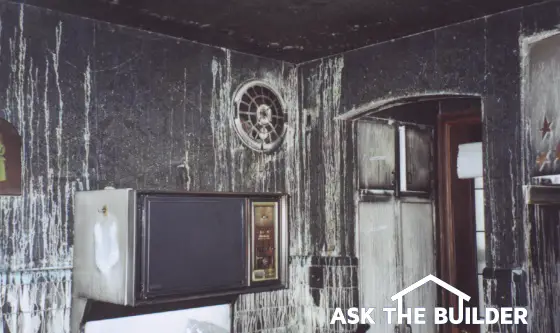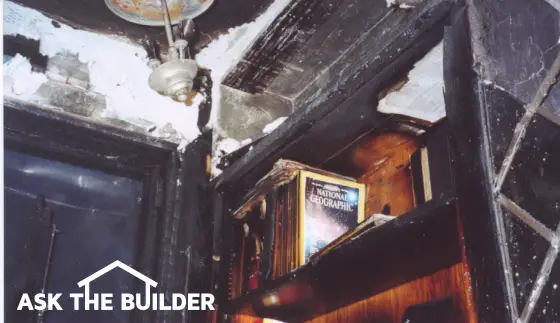Understanding Your Insurance Coverage Before Disaster Strikes!

The fire never made it into the kitchen. You are looking at classic smoke, heat and water damage. Water damage happens when all of the steam from the water used to fight the fire starts to condense on the ceilings and walls.
Insurance Coverage
DEAR TIM: How do I know if my home owners insurance policy will actually cover the true cost to rebuild or repair my home after a fire or other disaster? Is it possible that there could not be enough money in the policy and that I would have to take money from savings to rebuild my home? How can I tell if I have enough insurance to rebuild my home as it stands now? Terry F., Daytona Beach, FL.
DEAR TERRY: It is said that timing is everything. Just one month ago my neighbor's house caught on fire. They were not home but an alarm system summoned the fire department. Even though the house was less than a mile from the firehouse and the response of the fire department was immediate, it appears the house sustained close to $350,000 in damage. The fire was contained to just one room and two hallways, but the smoke and heat damage was enormous. The fire was so hot that it melted the asphalt in the tar paper under the tile roof!
Aside from losing many of their one of a kind possessions, it appears they might be under insured for the loss. Their home has very unique plaster work, woodwork, leaded glass windows and other custom finishes. They had a fairly standard homeowners insurance policy, but it appears that the cost of construction and remodeling in my area has possibly outpaced the loss coverage. They may have to take out a loan or dip into savings to restore the home to pre-fire conditions. You bet it is possible that the same could happen to you.
Most homeowners insurance policies have a standard feature called an inflation guard endorsement. This feature causes your coverage to automatically increase each year. Most high quality insurance companies use sophisticated computer software to track residential construction and remodeling costs. They do it by postal zip code. One region of the nation may have flat or static construction costs while another part of the nation may experience cost increases of 5 or 6 percent per year. Be sure that your insurance company tracks costs using this method. An experienced insurance agent knows about such matters.
The trouble is that this method of costing and indexing only works if the correct number was used for the replacement cost of the home when the policy was written. It is not uncommon for a homeowner or an inexperienced insurance agent to use the real estate market value of a home when completing an insurance policy application. This is a mistake. What an existing home sells for does not necessarily equal the cost to rebuild the home after a fire, tornado, hurricane or flood!
To determine if you have enough insurance coverage in the event of a loss, there are several things you can do. If you have a top notch insurance agent and they represent a top company, they have questionnaires that you can fill out that allow you to accurately describe your house and its finishes and fixtures to the insurance company. Many of these actually have photographs so you can compare your home to the different types the insurance companies track. Once complete you submit the form and the insurance company calculates what they think it would cost to replace or rebuild the home. Some companies will actually send out an estimator to physically inspect your home and calculate a replacement cost.

The fire consumed the room to the left. Flames were eating away at this bookcase. The top of the leaded glass doors melted.
You can actually arrive at a very close replacement cost on your own. Visit new model homes in your area. Select houses that are as close in size, style, and finish to yours as possible. This is somewhat hard to do if you live in an older home but keep in mind that the craftspeople who build new homes in your area will likely be the same ones who rebuild your existing home should something happen. Calculate the square footage of finished living space in the new model home. Ask the developer or realtor what the lot cost. Deduct the cost of the lot and the real estate sales commission from the asking price of the model home. Divide this number by the square footage total. The result should be a fairly accurate cost per square foot to replace your home. Multiply this cost per square foot by the number of square feet of finished living area in your home to determine your home's replacement cost.
Column 345